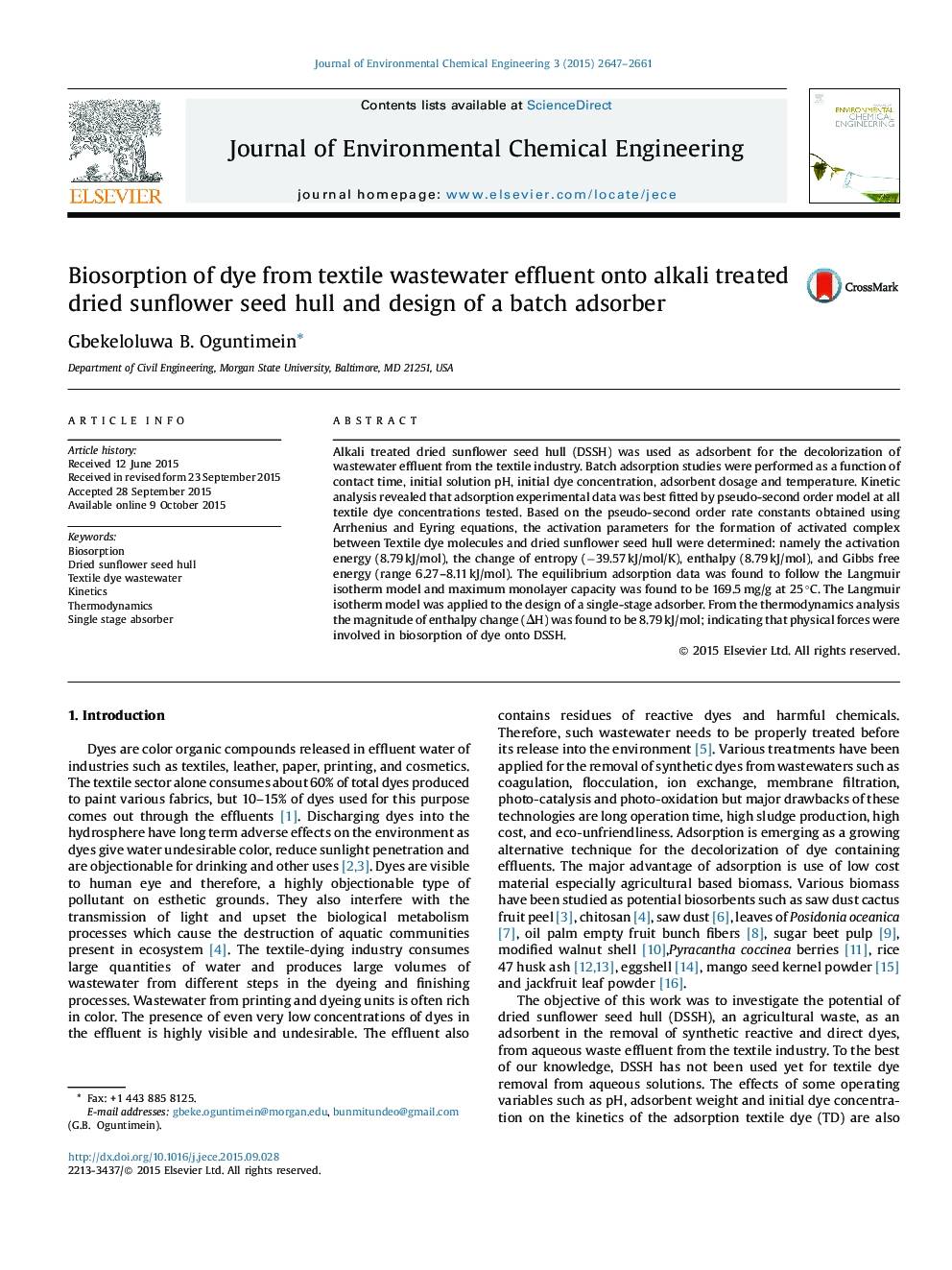| کد مقاله | کد نشریه | سال انتشار | مقاله انگلیسی | نسخه تمام متن |
|---|---|---|---|---|
| 222071 | 464269 | 2015 | 15 صفحه PDF | دانلود رایگان |
• This is the first reported application of sunflower seed hull for the removal of dye from the wastewater effluent from the textile industry.
• This paper also unlike other papers of this nature includes the treatment of activation energy and the design of a single stage adsorber both topics add value to the paper.
Alkali treated dried sunflower seed hull (DSSH) was used as adsorbent for the decolorization of wastewater effluent from the textile industry. Batch adsorption studies were performed as a function of contact time, initial solution pH, initial dye concentration, adsorbent dosage and temperature. Kinetic analysis revealed that adsorption experimental data was best fitted by pseudo-second order model at all textile dye concentrations tested. Based on the pseudo-second order rate constants obtained using Arrhenius and Eyring equations, the activation parameters for the formation of activated complex between Textile dye molecules and dried sunflower seed hull were determined: namely the activation energy (8.79 kJ/mol), the change of entropy (−39.57 kJ/mol/K), enthalpy (8.79 kJ/mol), and Gibbs free energy (range 6.27–8.11 kJ/mol). The equilibrium adsorption data was found to follow the Langmuir isotherm model and maximum monolayer capacity was found to be 169.5 mg/g at 25 °C. The Langmuir isotherm model was applied to the design of a single-stage adsorber. From the thermodynamics analysis the magnitude of enthalpy change (ΔH) was found to be 8.79 kJ/mol; indicating that physical forces were involved in biosorption of dye onto DSSH.
Journal: Journal of Environmental Chemical Engineering - Volume 3, Issue 4, Part A, December 2015, Pages 2647–2661
